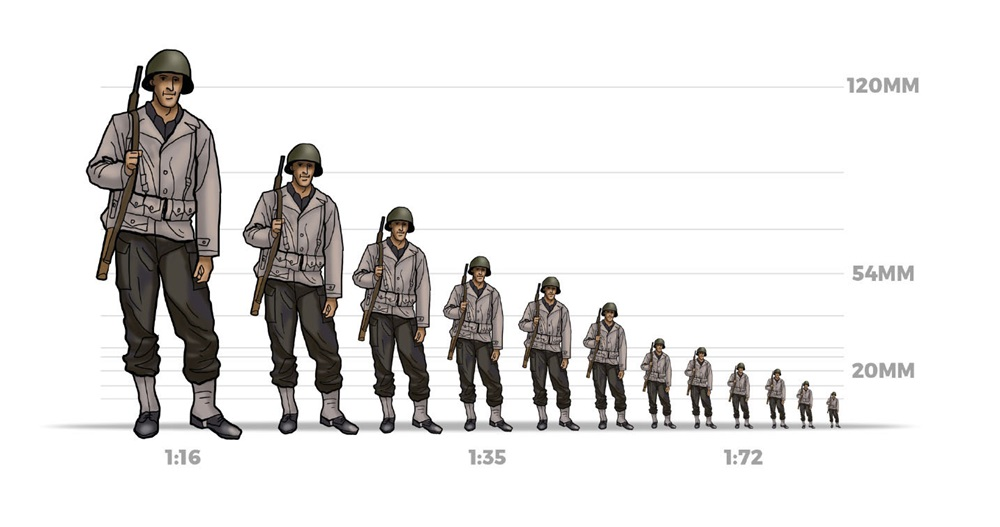British Rifle Platoon Part 1 - Structure

A Platoon Attack © IWM (H 4929) - Major General Alexander, the Battalion Commander, explaining the Platoon attack during a training exercises in the Nottingham Command. 18.10.1940
Platoons are used as anything between the starting point (Chain of Command) or as the smallest sized combat viable unit (Flames of War) of a variety of table top games so understanding their composition and building one is a great way of starting a collection.
The first platoon composition we'll look at is the British Rifle Platoon. During WWII the British operated with the assumption that about 3 was a good number of things to have under the command of one person. As such there were 2 sections (a 3 man Been section & a 6 man Rifle Section) in a squad, 3 squads in a platoon, 3 platoons in a company, 4 companies in a battalion, 3 battalions in a brigade and 3 brigades in division.
However it didn't quite work out like that in practice (or even on paper) as there were also support sections embedded at the platoon level all the way up to support battalions embedded at the division level. This meant that each person in a leadership position probably had 5 units of various sizes and capabilities to juggle before we start to add seconded support elements and other roles such as the forward observer who sat in a strange place within the command structure. Further, the size of a division grew during the war as more support elements were required with the increase in number of different threats they faced. Other countries had a different structure and development pattern over the war but for brevity I will leave it there with the British structure as an example.
The following British Rifle Platoon is a rough guide of the platoon's personal and armoury. But first a few notes:
- NCO stands for Non-commissioned Officer
- No.1 is always the gunner or operator of a team weapon
- No.2 is always the loader of a team weapon
- The officers' small arms varied on the theatre, year and their own nationality so are not listed below, but generally were issued a Pistol and/or SMG
- The anti tank weapon was not always employed and was technically a Company level weapon but I have included it below as there were 3 Boys or PIATs per Company, an average of one per Platoon
HQ:
- First lieutenant (man in charge)
- Second lieutenant (the first's second man)
- Various hangers on (batmen, drivers, runners, radio operators, translators, guides, attached forward observer etc…)
- 2 inch mortar team: 2 or 3 men, operator (No.1), loader (No.2) & if late war an NCO
- Optional anti-tank team: No.1 & No.2 with either a Boys Anti-Tank Rifle (early war) or PIAT (late war) - however crew for this weapon were pulled from the Rifle Sections, it was not it's own dedicated team
3 Rifle Sections each typically consisting of:
- NCO
- Rifle Group: 6 men (one group would be down 2 men if they were assigned to the Anti-Tank weapon, ibid.)
- Gun Group: 3 men, No.1, No.2 & NCO's second man, typically armed with Bren gun
The Rifle Section's size changed throughout the war, ranging from 8-11 men depending on Platoon type, theatre and year. However, the core principle of an NCO, Rifle Group and Gun Group remained fairly constant.
As alluded to above, different small arms used throughout the war depending on various factors. For example:
In the Mediterranean theatre, at the beginning an officer would have had access to a pistol and Lee Enfield rifle, then he might have had access to a Thompson which he would have probably used all the way through Italy. For other officers who joined the war a bit later (say 1943, Italy) the Sten gun would have been issued as the British forces became less reliant on arms manufactured in the U.S.A.
Sometimes old equipment was used due to supply constraints, such as the Lewis gun. The Lewis gun was deemed outdated at the outset of the war, however replacing it with Bren guns had not been completed by the outbreak of the war. With the mobilisation across the Commonwealth increasing demand, far flung garrisons in the 'Far East' were not completely refitted when the war with Japan broke out so some units had to make-do with the Lewis gun. Additionally, following the loss of equipment in France, they were also issued from stores to the B.E.F. so would be appropriate for any alternative history Operation Sealion games.
Nationality also played a part, for example, the Owen SMG was developed in Australia and employed from 1942 onwards, first by the Australians then other Pacific forces, such as the Kiwis and Americans. In addition, Australia had a slight variant of the Rifle Section, where the SMG was given to the 'most aggressive' soldier in the Rifle Team instead of the NCO.
The next couple of articles will cover how to represent different nationalities across the British forces in miniature and review a couple of plastic miniature products to that effect.

Comments
Post a Comment